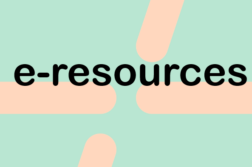Many research publications are subject to charge: you need either a Visa number or membership in an organization that pays for access. As HAMK member you have full access to more than 12 thousand e-journals, but that is still only a fraction of what is available. There is plenty of scholarly information available also on the open web, but finding it can be tricky with general search engines like Google, Yahoo or Bing. Here you will find five tips on how to find open scholarly information.
1. Search engines and web services that specialize on scholarly information
There are different types of search engines and web services that specialize on scholarly and research information. Here are a few examples:
- Google Scholar targets academic journals and books, conference papers, theses and dissertations, preprints, abstracts, technical reports, and other scholarly literature. However, questionable sources like predatory journals are also included. On the plus side, Google Scholar also offers access to HAMK library e-collections (see tutorial).
- BASE search engine harvests metadata only from selected web sites and institutional repositories and thus offers a more reliable alternative for Google Scholar.
- iris.ai is an example of the future of search tools: artificial intelligence harnessed into information search and management. Iris.ai requires registration, but can be useful in finding research information and creating reading lists.
2. Open access articles on journal homepages
Journals otherwise subject to charge may offer free access to individual articles. Often the author’s home organization has paid an article processing charge (ACP). You can easily identify open articles by an icon (eg. open lock) or the text Open access, see e.g. Current opinion in environmental sustainability.
3. Open access journals
There is also a great number of journals freely accessible online. Journal might have been created for ideological reasons, namely the free availability of information. Or open access may be its business model and the author or his/her organization pays for free access.
- DOAJ, Directory of open access journals around the world.
- SpringerOpen is a collection of OA journals provided by one scientific publisher.
4. Open repositories and self-archiving
Self-archiving is when author deposits a free copy of his/her document online for all to access. Usually it is the author’s own institutional repository or open archive and the document (article) may be identical to or a previous version of the published article. HAMK staff publish in Theseus, while universities have their own repositories. Do you know at which university your topic is being researched? Are you familiar with the researchers in your field – where do they work? It might be useful to check the repositories of those universities or research institutions.
Here are a few examples of open repositories and services that utilize them:
- Helda – Helsinki University digital archive, see also JYX, UTUPub, Doria, UEFpublication, Aaltodoc etc.
- Opendoar lists academic open access repositories around the world.
- unpaywall is a browser extension that finds free versions of articles. If the article has a digital object identifier (DOI), unpaywall will locate all its individual versions.
5. Research networks
Individual research networks like Researchgate and Elsevier’s Mendeley allow researcher to upload and share information inside that network. Researchers upload the articles by themselves, so all upload may not be strictly legal and in accordance to copyrights.
Finally: library helps when your article is not available online
If the article you want is not to be found in HAMK library collections or freely online you can contact HAMK interlibrary lending service. HAMK students and staff are entitled to a reasonable number of article copies free of charge. For more information on interlibrary lending, see HAMK library services page.


